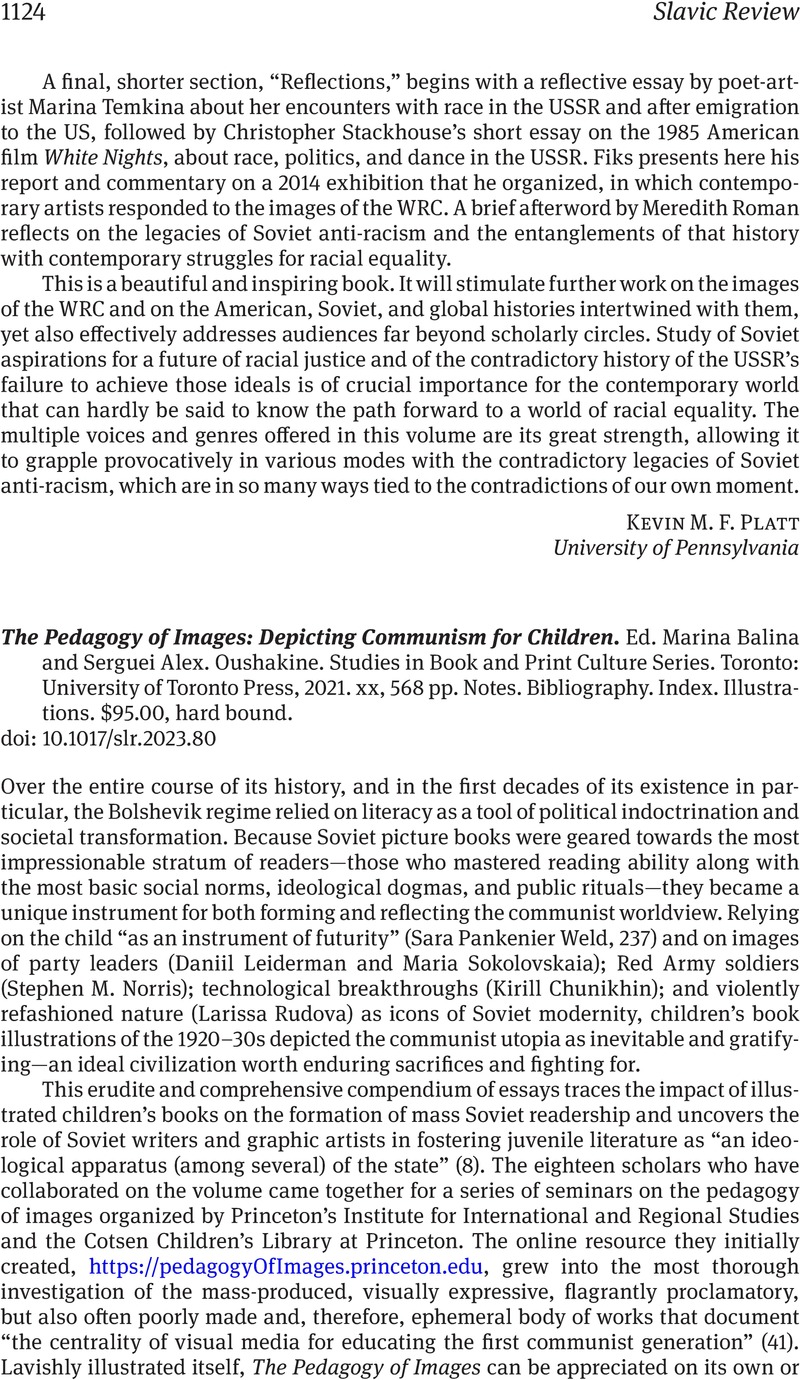No CrossRef data available.
Article contents
The Pedagogy of Images: Depicting Communism for Children. Ed. Marina Balina and Serguei Alex. Oushakine. Studies in Book and Print Culture Series. Toronto: University of Toronto Press, 2021. xx, 568 pp. Notes. Bibliography. Index. Illustrations. $95.00, hard bound.
Review products
The Pedagogy of Images: Depicting Communism for Children. Ed. Marina Balina and Serguei Alex. Oushakine. Studies in Book and Print Culture Series. Toronto: University of Toronto Press, 2021. xx, 568 pp. Notes. Bibliography. Index. Illustrations. $95.00, hard bound.
Published online by Cambridge University Press: 12 May 2023
Abstract
An abstract is not available for this content so a preview has been provided. Please use the Get access link above for information on how to access this content.

- Type
- Book Review
- Information
- Copyright
- Copyright © The Author(s), 2023. Published by Cambridge University Press on behalf of the Association for Slavic, East European, and Eurasian Studies


